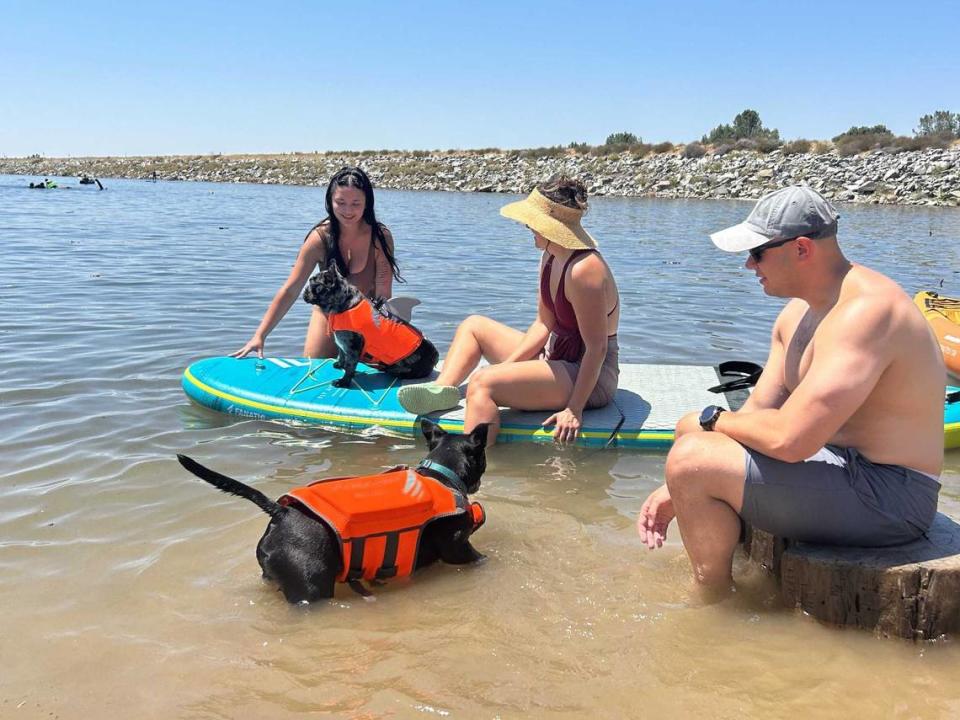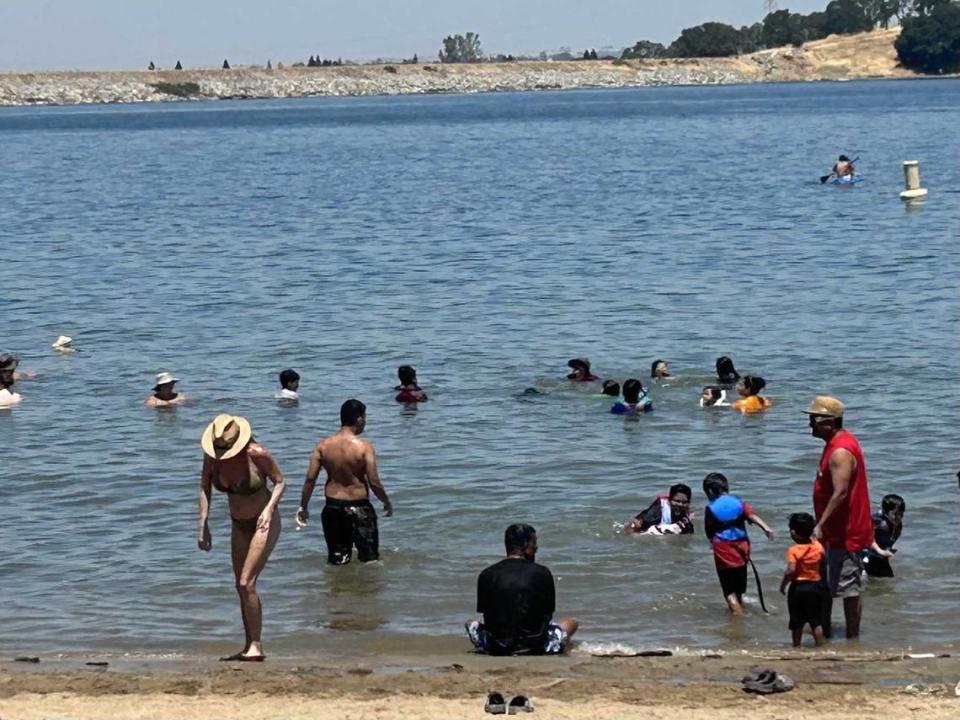Here’s what experts want you to know about outdoor activities in extreme Sacramento heat
One of the benefits of living in Sacramento is the easy access to the great outdoors.
Hiking, camping, water sports and golf are among the favorites of those who call the region home. But with the sweltering heat hitting triple digits each of the past two weekends, there’s a burning question worth asking: How hot is too hot to get outside and participate in some of our favorite summer activities?
Doctors say there isn’t a blanket number for the general population — though it’s recommended for most people not to do activities in extreme heat for longer than 20 or 30 minutes.
“Different people have a tolerance for it depending on their history, their age, their medical condition,” said Dr. Brandee Waite, the director of UC Davis Health Sports Medicine. “So it’s a little bit nuanced. It’s kind of like, how spicy is too spicy? ... But, certainly, being outside in the heat for any prolonged period of time can be not only uncomfortable, but life threatening.”
Waite said there’s a spectrum of illnesses that can occur when people are exposed to extreme heat. She mentioned heat cramps that arise from a combination of heat exposure and dehydration. The good news is heat cramps are relatively easy to manage by stopping the exercise, getting out of the heat and hydrating.
Heat exhaustion can be more problematic and heat stroke can be a medical emergency.
“The worst case scenario is true heat stroke, and that’s where people start to have mental or cognitive difficulties,” Waite said. “They might pass out or lose consciousness, making poor decisions, not talking right, not speaking right, almost like they’re drunk. That’s truly a medical emergency.
“Sometimes those people, they might not seem like they’re sweating very much,” Waite continued. “They might feel clammy to the touch or sticky, but they’ve exhausted all their sweating capacity. The problem is their surface temperature is not indicative of the temperature that’s deep within their bodies, which is having an effect on their organs — almost like cooking their organs on the inside out. So, if someone is outside in the heat and starts to have trouble with losing consciousness or trouble with their thinking, or making poor decisions, that is absolutely a reason to call 911.”

After a generally mild June, the heat amped up dramatically in July with six days (and counting) reaching triple-digits as of Friday, according to the National Weather Service. More heat is expected in the coming weeks. Sacramento park rangers have noticed more people flocking to beaches along the American River when temperatures get more extreme rather than staying inside to enjoy air conditioning.
“We make sure they stay hydrated,” ranger Commander Dave Spencer said. “We monitor them real closely, especially on real high days (when the river level is up). With the river being more manageable right now, we’re starting to see a large population of people coming in and rafting down the river.”
At the Sacramento State Aquatic Center at Lake Natoma east of Sacramento, staff are responsible for hundreds of children participating in summer camps learning to do water sports. They have the benefit of being able to jump into the water, which is often in the high 70s during the hot summer months.
Because of that, there is less concern about people renting boats, paddle boards or kayaks to take on the lake for an hour or two than the staffers who are there for entire work days.
“For us, it’s more about our staff safety,” said Cindi Dulger, associate director of the Sacramento State Aquatic Center. “(They are) working six-hour shifts or maybe an eight-hour shift in 116 degrees. So we did have early closures. We watched the temperature. We saw where we were going to hit the peak, so we did give our customers an opportunity to get in the water, but we did it in the cooler parts of the day when it can be managed.”
Hydration is paramount to dealing with extreme heat. Dulger said her staffers encourage young campers to drink lots of water the day before and the morning of planned outdoor activities. A light urine color is a good indication of proper hydration levels while darker urine is a sign of dehydration.
Said Waite: “You want your urine to be the color of light apple juice or a watered-down beer.”
But there are other ways to judge hydration.
“Another one that’s a little bit easier to tell is the tensing of your skin,” Waite continued. “So if you pinch the skin on the back of your hand and it goes right back down, it snaps back, then you’re pretty well hydrated. If it stays kind of tented up and doesn’t really snap back quickly. But that can also be affected by age. Older people don’t have as much elasticity in their skin, so it’s not as good of a test for older people or the elderly.”

Waite also works with the Sacramento Republic soccer team, which kicked off at near 100-degree temperatures in a game last weekend. She offered other tips for staying cool when temperatures rise.
Waite mentioned small fans — which can be found on Amazon — that can be powered by cellphones. Another effective idea is as simple as a wet towel or handkerchief.
“Also, using evaporative cooling,” Waite said. “So, if you have handkerchief, and you get it wet and put it around your head or around your neck, as the heat evaporates the water, it actually cools down the fabric and that can cool your body off. That’s a trick that ultra-marathon runners use if they’re running through hot environments. You can soak your hat in some water and then put it on, and as your hat evaporates and dries off, it actually helps dissipate more heat from your head.”


